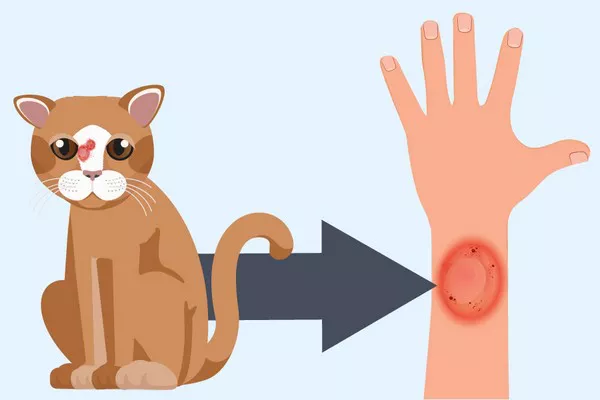Vitiligo, a condition characterized by the loss of pigment in certain areas of the skin, has long puzzled medical experts and researchers. While its exact cause remains elusive, numerous studies have pointed towards autoimmune mechanisms playing a significant role in its development. Understanding whether vitiligo is indeed an autoimmune disease is crucial for advancing treatment strategies and providing relief to those affected by this challenging condition.
The Nature of Vitiligo: An Overview
Before delving into the autoimmune aspect of vitiligo, it’s essential to grasp the basics of this skin disorder. Vitiligo manifests as depigmented patches on the skin, resulting from the destruction of melanocytes, the cells responsible for producing melanin, the pigment that gives skin its color. These patches can appear anywhere on the body and vary in size and shape.
The visible symptoms of vitiligo can cause distress and psychological impact, affecting an individual’s self-esteem and quality of life. While the condition itself is not physically painful or harmful, the emotional toll it takes on affected individuals should not be underestimated.
The Role of Autoimmunity in Vitiligo
Autoimmune diseases occur when the body’s immune system mistakenly attacks its tissues, believing them to be foreign or harmful. In the case of vitiligo, mounting evidence suggests that autoimmune mechanisms are involved in the destruction of melanocytes.
One of the primary pieces of evidence supporting the autoimmune theory of vitiligo is the presence of autoantibodies and T cells targeting melanocyte-specific proteins. Studies have identified antibodies and cytotoxic T cells directed against melanocyte antigens, indicating an immune-mediated attack on these cells.
Furthermore, the association of vitiligo with other autoimmune conditions strengthens the argument for its autoimmune nature. Patients with vitiligo are more likely to have other autoimmune diseases, such as autoimmune thyroid disorders, rheumatoid arthritis, and type 1 diabetes. This clustering of autoimmune conditions suggests a shared underlying mechanism involving immune dysregulation.
The Immunological Basis of Vitiligo
To understand how autoimmunity contributes to vitiligo, it’s essential to explore the immunological processes involved. The immune system is finely regulated to distinguish between self and non-self antigens, preventing the destruction of healthy tissues. However, in autoimmune diseases like vitiligo, this self-tolerance breaks down, leading to immune-mediated damage.
In vitiligo, the immune system recognizes melanocytes as foreign or aberrant and mounts an attack against them. This process involves both innate and adaptive immune responses. The innate immune system, comprising cells like macrophages and natural killer cells, initiates the inflammatory cascade, attracting adaptive immune cells to the site of damage. Subsequently, cytotoxic T cells, activated B cells, and other immune effectors target melanocytes, leading to their destruction.
The exact triggers initiating this autoimmune response in vitiligo remain unclear, but several factors may contribute. Genetic predisposition, environmental factors, and cellular stressors are thought to play roles in triggering or exacerbating the autoimmune attack on melanocytes.
Clinical and Experimental Evidence
Clinical observations and experimental studies provide compelling evidence supporting the autoimmune hypothesis of vitiligo. Histological examinations of vitiligo-affected skin reveal lymphocytic infiltration around depigmented areas, indicative of an immune response. Additionally, animal models of vitiligo, such as the vitiligo mouse model, demonstrate immune-mediated destruction of melanocytes resembling human vitiligo.
Furthermore, treatments targeting the immune system have shown efficacy in managing vitiligo. Topical corticosteroids, calcineurin inhibitors, and phototherapy aim to suppress immune activity in the skin, leading to repigmentation of affected areas. Similarly, systemic therapies like oral corticosteroids, immunomodulators, and biologics target immune dysregulation to halt disease progression.
Challenges and Controversies
Despite the compelling evidence supporting the autoimmune theory of vitiligo, challenges and controversies persist. One of the main challenges is identifying the initial trigger or triggers that initiate the autoimmune response. While genetic predisposition and environmental factors are implicated, pinpointing specific triggers remains elusive.
Additionally, not all cases of vitiligo exhibit clear autoimmune features. Some individuals may develop vitiligo without evident autoimmune markers, suggesting heterogeneity in the underlying pathogenesis. This diversity complicates the development of targeted therapies and underscores the need for personalized treatment approaches.
Implications for Treatment and Future Directions
Recognizing vitiligo as an autoimmune disease has significant implications for treatment strategies and research efforts. Targeting immune dysregulation offers promising avenues for therapeutic intervention, with immunomodulatory therapies showing efficacy in clinical trials.
Furthermore, unraveling the complex interplay between genetic susceptibility, environmental factors, and immune dysregulation will pave the way for personalized treatment approaches. Precision medicine holds the potential to tailor therapies to individual patients based on their unique genetic and immunological profiles, maximizing treatment efficacy and minimizing side effects.
Conclusion
In conclusion, while the exact cause of vitiligo remains multifactorial and incompletely understood, the evidence supporting its autoimmune nature is substantial. From immunological mechanisms to clinical observations and therapeutic responses, the autoimmune hypothesis provides a framework for understanding and managing this challenging skin disorder. Moving forward, continued research efforts aimed at elucidating the autoimmune basis of vitiligo and developing targeted therapies hold promise for improving outcomes and quality of life for affected individuals.


























